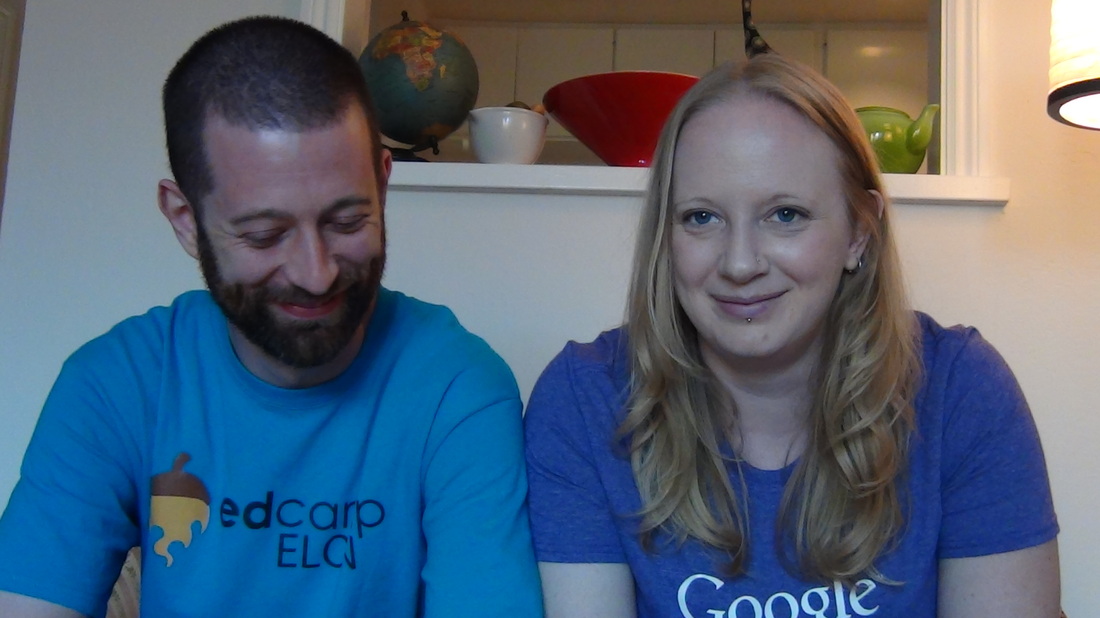It's also one of the biggest objection for teachers new to flipping.
There's no getting around it: creating flipped videos takes a lot of time.
That's why I don't make many videos.
The main reason for that is because I'm no longer the disseminator of knowledge and content in my flipped class. I have my students do a lot of it. Does that feel lazy? Sometimes. But I fight that (just like the other feelings about how I'm failing at various aspects of my professional life) for a simple reason.
Because the principle behind it is sound: The person who does the work does the learning.
Rather, I have students gather content on a topic, review it and choose the best content, then archive it. I do various different versions of this so that students get TONS of exposure to important concepts and LOTS of repetitions.
It's easiest when I give an example. So let's start with one I'm working on right now.
Buddhism is a very difficult religion for my students to comprehend. So I started by having them do a graphic organiser comparing three philosophies important in Chinese history - Confucianism, Buddhism and Taoism. I required that they look at at least four websites and choose the 1-2 that are the best to include in the graphic organiser.
Then they wrote a play in a group in which their characters responded to a moral dilemma in a Buddhist way. Then they watched the other groups perform and rated how Buddhist the solution was. Then they revised their play individually based on the feedback they got from me and their peers.
By that point, they had about 10 repetitions of Buddhist philosophy.
Then I taught them how to find powerpoints through Google Advanced Search. They found five good powerpoints on Buddhism (out of thousands of potential results) and chose the best three. Then they deconstructed slides to determine the most important information about Buddhism.
I gave them feedback and they had a group discussion.
Today, they did a Frayer Model vocabulary frame on Buddhism and on Hinduism. Tomorrow, they create a Google Slides presentation in which they compare Buddhism to Hinduism. I give them a template to ensure they don't copy from other sources. Then they will present their work to their peers for feedback.
Thursday, they are rating PDFs that compare the major religious traditions we've studied so far this year.
And that's as far as I've planned. But by the end of this week, they will have had about 50 repetitions of what Buddhism actually means. They have worked on their conceptual understanding, drawn images to help them remember, found dozens of sources and compared the veracity and presentation of the information, rated each other, and hopefully learned a whole lot about Buddhism.
Compare that to what I would have done before I really internalised the idea that The Person Who Does The Work Does The Learning.
I would have made a video about Buddhist principles, had them do a graphic organiser, and used those in one or two activities.
And then I would have moved on.
Which way do you think they learn more? Which way will help them master the content? And most importantly, which way is giving them skills embedded in the activities that help them grow as critical thinkers, listeners, speakers, readers and writers?
There is a place for me to be a content expert, but it is SO much more important to construct meaningful opportunities for students to make sense of the content for themselves.
Does that take planning? Sure. I had to create, duplicate, rename and share documents with each group. I had to organise folders in my gmail for student-copied documents. I had to write directions and anticipate issues with the instructional sequence.
But that doesn't take all that long.
And the results are more than worth it.


 RSS Feed
RSS Feed
